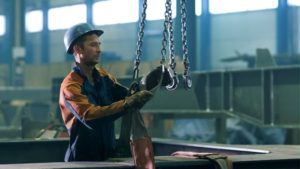
Product Liability Claim
Product manufacturers have a duty to make products that are reasonably safe for the people who use them. When a manufacturer makes a product available that was designed or manufactured defectively, that manufacturer can be held liable in a product liability claim. A product liability claim will generally fall under one or more of three categories:
- Defective Design—the defect comes at the design stage of the product and can involve things like a failure to install a safety shield
- Manufacturing Defect—the defect comes at the time the product is manufactured and may affect a single item in a batch of products.
- Marketing Defects—when a manufacturer fails to include adequate safety warning and instructions with a product
Unlike in a workers’ compensation claim, a worker may be entitled to damages for pain and suffering in a product liability claim.
Types of Equipment Involved in Injuries
Large, heavy machinery is frequently the culprit in workplace accidents, but injuries can be caused by something as small as a nail gun. Some of the most common types of equipment involved in an accident include:
- Punch presses or fabrication machinery
- Conveyor belts and rollers systems
- Defective ladders
- Defective Scaffolding
- Defective Cranes
- Power tools
Common Machinery and Equipment Defects
There are many different types of machinery and equipment used in the workplace. Some common defects that occur include:
- Nonexistent or inadequate safety shields or guards
- Defective emergency and power switches
- Faulty wiring
- Insufficient safety warnings and directions
- Use of low-quality materials during manufacturing
- Rotating motions hazards
- Cutting and mechanical hazards
In a product liability claim, the preservation of evidence is crucial to the success of the case. Therefore, you should contact a personal injury attorney as soon as possible. At Bonina & Bonina, P.C., we have over 50 years of experience helping New Yorkers injured by defective products. Contact us online or call us at 1-888-MEDLAW1 to schedule your free consultation. Home and hospital visits are available. Se habla español.
